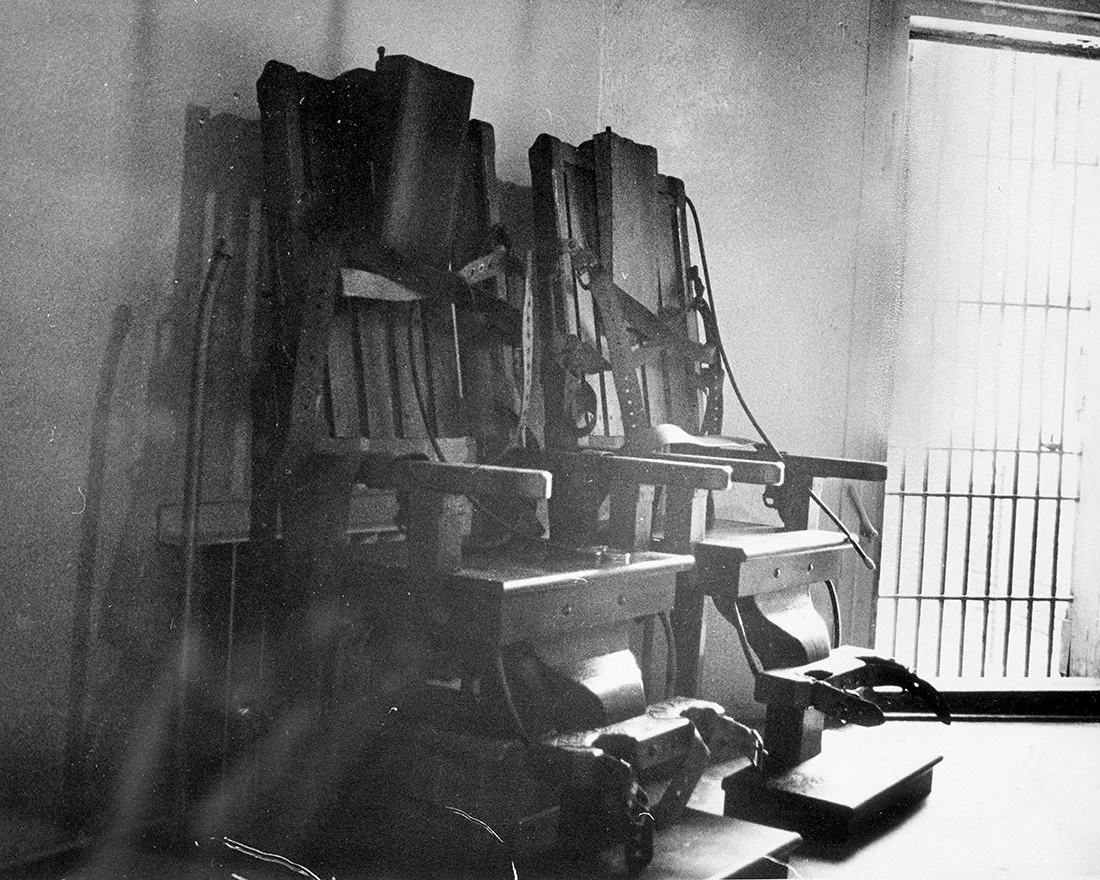Newsletter
The Executioner’s Last Meal
Death row prisoners rarely get last meals, writes Lyle May, who is on death row in North Carolina. But on the night of an execution, the prison staff break room is full of cookies and cake.

Out of all the meals consumed on death row, most people on the outside only know about the “last meal” requested by the condemned, provided out of some sense of dignity and humanity as window dressing for state-sponsored killing. They imagine lavish meals savored by hardened killers—and the invectives hurled by politicians as they pander to constituents about the extravagant cost.
But the public never hears about the executioner’s meal. I was not sentenced to death until March 18, 1999. Prior to that, as a “safekeeper” at Central Prison awaiting my capital trial in 1998, I experienced two executions. The first being North Carolina’s last use of the gas chamber, though I didn’t know it at the time. I just knew the state was putting people to death. My first execution on death row occurred a mere eight days after I got there. The feeling was different since I had been sentenced to death. It was exponentially heavier. I would feel that enormous weight and grinding pressure thirty-three times before executions stopped in 2006.
We heard talk about the executioner’s meal before on Unit Two, the old death row, but no one saw it. The idea of it spurred vicious imaginings. However, between 2002 and 2006, after death row had been moved to the new Unit Three, we witnessed something no one facing death should: A party the night of the execution.
The most galling part was the sheet cake.
At the time, the prison-staff break room was located in the main hallway of Unit Three. Two large plexiglass windows made it a sort of fishbowl: anyone could look in, whether the lights were on or off. On the day of an execution, the break room door was locked, and two long tables appeared, hugging the walls. Stacks of paper plates, napkins, Solo cups, and plastic utensils anchored one table, while a mess of food spread out over the other. Usually, there would be a half dozen two-liter bottles of soda, oversized family bags of chips, dips, cheeses, crackers, jars of cocktail sausages, trays of cookies, and that enormous sheet cake covered in colorful swirls of frosting. I know because I could see it. The meal was, for those of us shuffling back and forth from the chow hall, on full display. In 2003 there were seven such feasts.
Wide-eyed, and with barely concealed smiles, prison staff would deny that this was a celebration of any kind. No, they told us, on the night of an execution, extra staff were called in, just in case they had to quell a riot. And all those guards and executioners, well, they had to eat something. Execution nights are long nights, they insisted. Their denials were clearly lies, always delivered lightly with a guilty child’s who me? impudence.
Birthday cake is an odd requirement for a supposedly utilitarian staff meal, but there it was, served on execution night. We prisoners began to think of it as the executioner’s last meal, and one year, it was.
As of 2023, no one has been put to death in North Carolina since 2006. Executions were initially stopped because doctors refused to participate in them, and the European makers of one of the drugs used in lethal injections refused to export it to US prisons. Ongoing litigation over North Carolina’s Racial Justice Act, which allows death row prisoners to challenge their sentence if it was “sought or obtained on the basis of race,” has kept the de facto moratorium in place. Given the evolving standards of decency in the criminal justice system, the decline in capital sentences and executions, a high rate of death sentences reversed on appeal, and the increasing number of innocent people exonerated from death row, North Carolina may never put another prisoner to death. But until the state abolishes capital punishment, my friends and I know that our “last meal” may come much earlier than we hope.
What would you eat for your last meal? Would you even have an appetite, knowing that, in a matter of hours, after hugging and kissing your loved ones goodbye, your life would end? On death row, we rarely discuss last meals.
In 2006 the day before he would have been put onto death watch— the final seventy-two hours of isolation before the lethal injection—my friend JT received a stay of execution. I asked him about the last meal. “Eating?” He shook his head. “Who can think of food when you’re preparing to die? I probably would have refused it.” Newspapers report the condemned’s last meal in the same paragraph as their final words, how long it took for the death to occur (and whether any step was “botched”), who attended the execution, and whether the prosecutor and victims’ families made a statement. Lumping that information all together furthers the misconception that the last meal is eaten in smug satisfaction, at expense of the victims and the public.
For all the handwringing about extravagant last meals, those of us who know executions know that the gustatory requests of the condemned are seldom, if ever, met. Those awaiting death frequently refuse a last meal; others find that their facility allows them only to choose from what’s on the standard chow hall menu that day. Visions of delivery drivers lining up with steaks from one place and milkshakes from another are almost laughably false. So, no, prisoners don’t sit around drooling over what we would request, because we have no illusions that it would ever be provided. Discussions like that would just be feeding a fantasy, contrasting bitterly with the bleak food-as-required-calories system we actually live (and may eventually die in).
Excerpted from Witness: An Insider’s Narrative of the Carceral State © 2024, Lyle C. May, Haymarket Books. Used by permission.

ICYMI—From The Appeal
Forty-four states lack universal air conditioning requirements in their prisons, and 13 of those states are known for their extreme heat. A new federal program, the Greenhouse Gas Reduction Fund, could help cool these facilities using clean energy sources.
After a pretrial detainee worked nearly 500 hours without pay, he was reportedly thrown into solitary confinement for refusing to continue. A suit filed this week accuses Broome County Jail staff of forcing pretrial detainees to submit to unpaid labor, alleging the practice violates the Thirteenth Amendment prohibition against slavery other than as a punishment for a crime.
In the News
Crow Nation Police Department existed for only five months. It quietly disappeared just days after an officer chased a 17-year-old boy to his death, leaving a grieving family and many questions behind. [Samantha Michaels / Mother Jones]
Florida is charging formerly incarcerated people $50 a day even if they’re no longer in prison. The “pay to stay” fee is based on the original length of a person’s sentence, so if they are released they still need to keep paying for a prison bed they’re not using. [Kylie McGivern / ABC Action News]
Texas prisons have been accused of “cooking [prisoners] to death” in an updated lawsuit to cool the state’s prisons. Advocates are seeking a maximum prison temperature of 85 degrees Fahrenheit, the limit Texas jails have had to comply with for three decades. [Michelle Pitcher / Texas Observer]
Private companies have received $100 million to clear homeless encampments in California. The companies include construction firms and environmental services firms that specialized in cleaning up hazardous waste. [Brian Barth / The Guardian and Type Investigations]
More than 6,000 incarcerated people died during the first year of the pandemic, according to a new study. At the pandemic’s height in 2020, incarcerated people were dying three and a half times more frequently than those in the community. [Anna Flagg, Jamiles Lartey, Shannon Heffernan / The Marshall Project]
